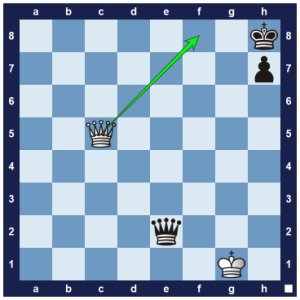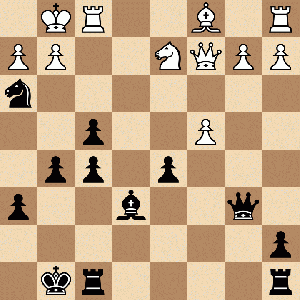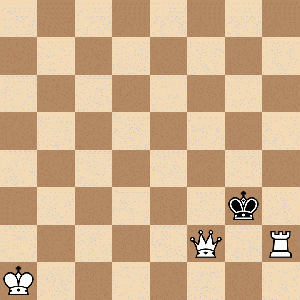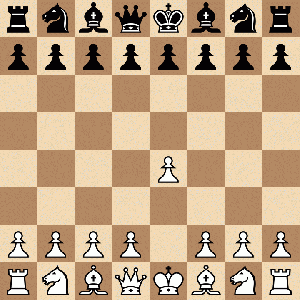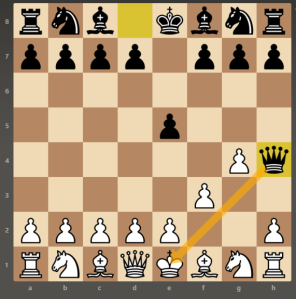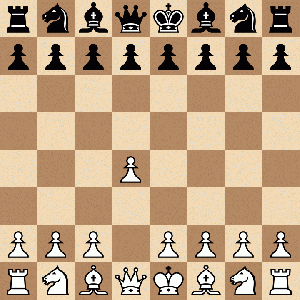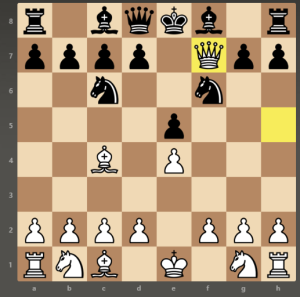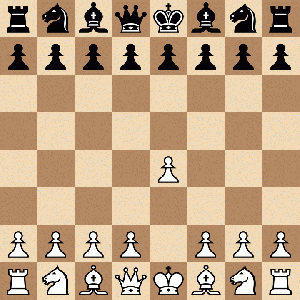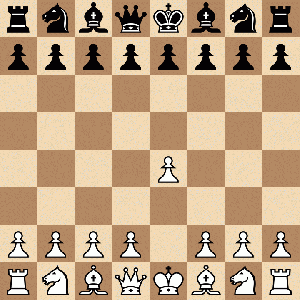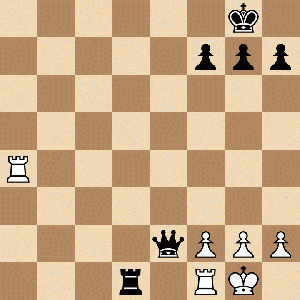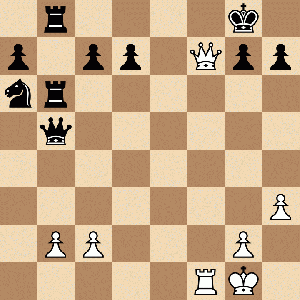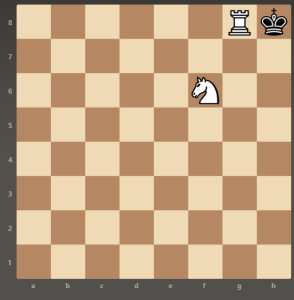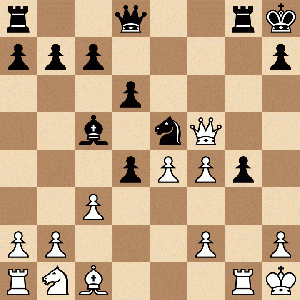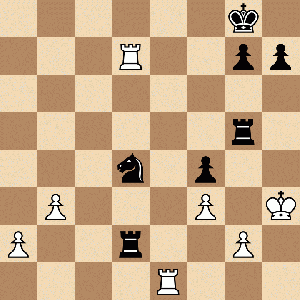When it comes studying chess, one of the most underestimated elements of the game are the checkmating patterns. In this series we look at this very important part, focusing on the most common checkmates and characteristic patterns leading to them.
We have already looked at the majority of the pieces and their abilities to deliver checkmate. In this part of the series we take a look at the checkmating ability of the last piece we look at – the bishop. Controlling diagonals, this mighty piece always relies on the assistance of another piece, whether it would be a queen, rook, or even another bishop. Below we look at five common patterns involving a bishop and a major piece.
1. Morphy’s mate
Named after the great Paul Morphy, this checkmating pattern is one of the most popular positions in the world of chess. The pattern is executed with the combined action of the bishop and a rook.

As seen from the diagram above, the black king is completely cut off on the h-file, with his own pawn preventing the king from moving around the h-file. The rook cuts off the g-file, completely restricting the king’s movement. The only thing left for the pattern to work is the bishop delivering checkmate from d4. This pattern could also be used in conjunction with a discovered attack as seen from the diagram below.
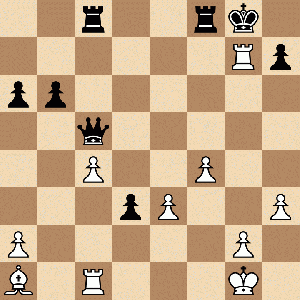
The above position is from the game Reshevsky – Shainswit, 1951. In the actual game, Black resigned after Rg3+ since, as seen above, the only moves to slow down the checkmate are giving up the queen and the rook. An interesting fact is that the checkmating pattern received its name from a game in which it did not feature – Paulsen – Morphy, 1857. The game inspired an idea for building up into the checkmating pattern using a beautiful queen sacrifice against a kingside castled king.

By taking the knight, the queen threatens mate in one with Qxg7# so taking back with the g-pawn is compulsory. This opens up the g-file, creating the opportunity for the white rook to cut the black king off with a check, followed by the lethal blow from the bishop with Bxf6#.
2. Pilsbury mate
Named after another great XIX century player in Harry Pilsbury, this checkmate pattern is quite suited to be trained alongside the abovementioned Morphy mate as they are virtually variants of the same idea. In this particular pattern, the bishop and the rook work in the same way as in the Morphy mate but this time the rook delivers the final blow, as the bishop is controlling the king’s escape.

In the example above, the bishop is controlling the long a1-h8 diagonal, and with the black king restricted by his own pieces, the rook slides over to g1, delivering checkmate. The below diagram shows one possible buildup for this checkmating pattern. The position is from Savic – Radojevic, 2006.

After the white bishop captures the black knight, it seems that the white queen is up for grabs, but capturing it, as seen above, unleashes the potential of the dark-coloured black bishop and the remaining white rook. Not controlled by the black knight anymore, the dark-squared bishop gives a check on g7, followed by a discovered check with Bf6+, and after the queen tries one last attempt to stop the checkmate, the rook captures the black lady with a crushing Rxg5#. It is worth to note that just retaking the white bishop at the first move as opposed to capturing the ‘hanging’ queen would have freed an escape square on f7 for Black, should he needed it. Another common buildup to the Pilsbury mate involves a rook/queen sacrifice.
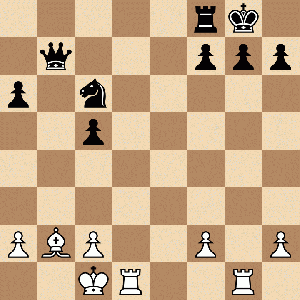
In this case, the rook sacrifices itself on g7, thus opening the g-file for the bishop and the d1-rook. It is important to note that after the king slides over to h8, any move other than the double check Rg8+ is most likely losing for White, as the knight can block the bishop on d4, while the queen could exchange itself if needed. However, the double check means that the black king has to do something about it and the only option is to retake on g8, hence giving White the opportunity to execute checkmate with Rg1#.
3. Opera mate
The Opera checkmate pattern takes its name from a famous game called the Opera game. Unsurprisingly, the origins of this patter come from Paul Morphy again, who played against the Duke of Brunswick and Count Isouard in Paris, in 1858, while watching opera. This pattern again involves the combined action of the rook and the bishop, and is another pattern that is probably best learned in conjunction with the abovementioned Morphy and Pilsbury mates, as it relies on similar principles. The final position of the actual opera game is shown below.

The black king is cut off by his own pieces, and just like in the Pilsbury mate, the bishop is controlling his only squares. What is left for the white rook, is to deliver swiftly checkmate on d8. In the actual game, this move was preceded by a beautiful queen sacrifice well in the tradition of the great Paul Morphy.

The pattern is quite common when the enemy king is protected by a triangle pawn structure, like in the King’s Indian and Pirc defences. It is important to note, that the rook could be anywhere on the rank/file where the checkmate is delivered, as long as the opposing king is controlled by the bishop.
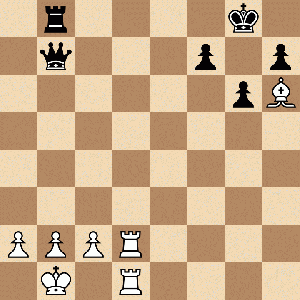
In this last example, the material advantage and mating threats do not help black, as the white rooks attack Black’s back rank, weakened significantly by the activity of the bishop. All the moves are forced and White emerges triumphant after 1. Rd8+ Rxd8 2. Rxd8#.
4. Balestra mate
In the last two examples, the powerful combination of the mighty queen and a bishop is looked at, starting from the Balestra mate. This checkmating pattern takes its name from a fencing term for powerful lunges, as the bishop lunges to checkmate the opposing king, restricted by the powerful queen.

As seen in the above diagram, the black king has only one square left to move, which is conveniently situated on a light square. The white bishop lunges with Bc6# swiftly delivering checkmate. In the game Bang – Sayre, 1921, Black explores this pattern to deliver checkmate on move 27.
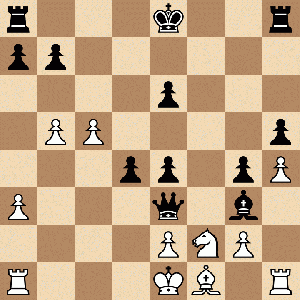
The combined work of the queen and the bishop leads to series of forcing moves to get the white king on c1, cut off from the b-file and the d1-a4 diagonal by the black queen. The bishop performs only a small hop this time to deliver the final blow with Be3#.
5. Max Lange’s mate
The last checkmating pattern in this article is the Max Lange’s mate, named after another player from the XIX century and involving again the queen and a bishop. This checkmating pattern exploits weak squares around the king.
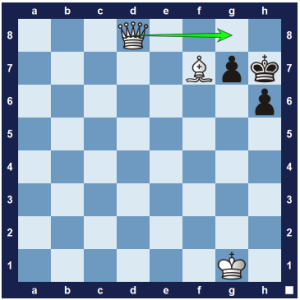
In the above example, the light squares around the black king are very weak and the queen and light-squared bishop exploit them with their combined action. The bishop restricts the king on the h-file, covering the two possible escape squares g8 and g6, while the queen controls the back rank, completely restricting the black king. The queen delivers the checkmate with Qf8#. An example of a beautiful buildup and execution of this checkmate pattern is found in the game Sikorova – Quinn, 2001.
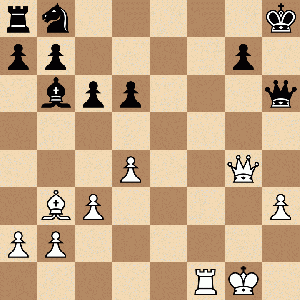
With the black queen looking to exploit the white king’s exposed position, White has to keep playing only forced moves. As seen from the diagram above, with series of checks, including a rook sacrifice, the black king is forced on h8, with the white bishop positioned perfectly on f7. The white queen jumps on c8 to deliver one check, and then slides over with a Qg8#, checkmating the black king.





